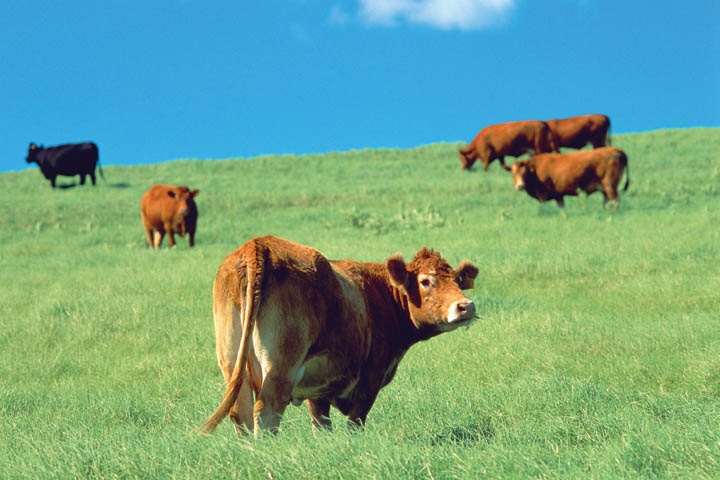September 20, 2010

A growing number of beef producers want what many row-crop farmers already have: the convenience, versatility and cost savings of precision farming.
Now a few of them have it, thanks to the work of two Alabama Extension educators.
With funding provided by the Alabama Cattlemen's Association and the 50-cent Check-off, Extension educators Ken Kelley, Josh Elmore and Olin "Buck" Farrior provided three southwest Alabama producers with global positioning system devices.
The increasingly affordable global positioning system technology associated with precision farming has enabled row-crop producers to plant, spray and harvest their crops with virtual pinpoint accuracy. The result is dramatic cost savings for many.
Extension educators were inspired to secure the same advantages for the southwest Alabama livestock producers.
"Much like row-crop farmers, livestock producers use fertilizers and herbicides to make their pastures more productive, but they often have trouble making uniform applications," says Ken Kelley, a regional Extension livestock educator.
In the case of fertilizers, Kelley says, the end result of uneven fertilization turns out to be alternating light and dark green patches throughout the field.
Chuck Madaris, a purebred and commercial producer who also sells hay, benefitted from the grant and initially used his GPS device to spread chicken litter, which serves as his sole fertilizer source.
"When we spread litter in the hayfield, it was just about impossible to do a good job because the fields are cut smooth and it's almost impossible finding tracks," he says. "GPS definitely offers an advantage."
Madaris also adapted the GPS device for use with spray applications, which seemed to work more effectively than the foam markers previously used.
He says he has not been disappointed.
"There was a slight learning curve, but as we go along, I think we'll find it easier to use."
Madaris says the technology is especially well suited to work on operations such as his, in which more than one person is involved with the applications.
"We got one applicator who works from 8 to 5, and I like running in the evening, so it was very easy to follow up right behind him and know where he was," he says.
He sees convenience as a big plus too.
"It takes out a lot of the fatigue when you're spraying litter because you don't have to watch the tracks so much," Madaris says. "For me personally, it's a lot more comfortable to run, and I don't have to concentrate on it as hard.
"Stop at lunch or stop one day and start the next — you know right where you are."
How well this approach would work with other cattle operations depends on the size and special needs, Madaris says, adding that the likely best candidates would be farms that already are considering equipment replacements.
"I think any producer considering replacing foam markers or buying a new piece of equipment could put that cost toward purchase of a GPS system," he says.
Amy Winstead, a precision agricultural Extension agent who assisted Kelley with the effort, says she's seeing a growing interest in the technology among cattle producers throughout the state.
"We're seeing the same level of interest we saw among row-crop producers roughly five years ago," she says, adding that with precision farming technologies coming down in price, more producers are able to adopt the technology, especially what she describes as "entry level guidance equipment."
You May Also Like




